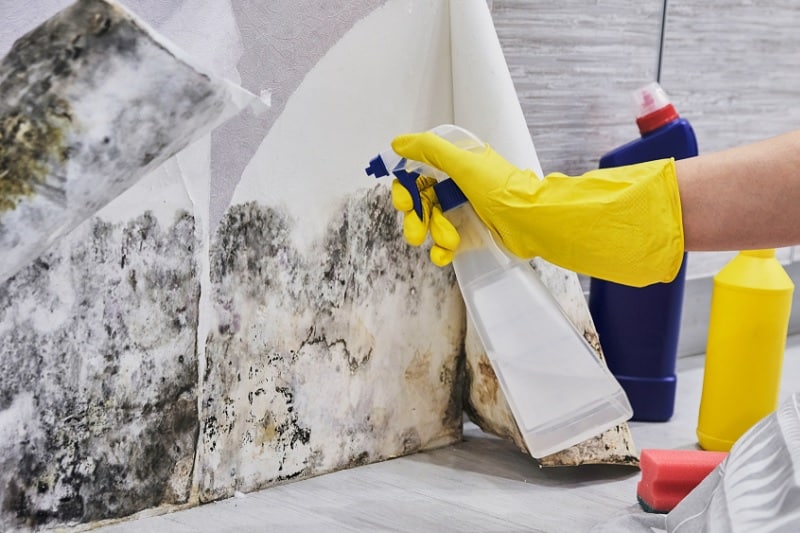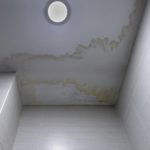Slimy pink stains are common in the shower. No matter how hard you try to keep your shower tray and curtain clean, this strange pink film starts to appear everywhere!
These mysterious stains are often assumed to be mould. Mould is almost expected in the bathroom as the moisture makes it the ideal place for mould spored to grow and thrive.
However, pink shower stains aren’t caused by mould at all! So if not mould, why is your shower pink?
Why Is My Shower Pink?
The “pink mould” in your shower isn’t mould at all! Instead, these unsightly stains are caused by a specific strain of bacteria called Serratia marcescens.
These airborne bacteria occur naturally in soil, animals, and water and produce a red pigment at room temperature.
This pigment can range from a blood-red to orange to pale pink, depending on the surface beneath and the size of the bacteria colony.
Of course, your shower is wet frequently! Therefore, these bacteria easily make their way onto all parts of your shower, from the shower head to the shower tray.
At first, only a few bacteria are present, so their red colour won’t be visible. But as the colony grows, they turn your shower pinker and pinker, forming a slimy biofilm.
To make things worse, Serratia marcescens thrive in damp and moist conditions. The bacteria also require fatty substances to feed off.
Shampoos and soaps are made from fats, so their residues provide the perfect food for these pathogens. This makes your bathroom an ideal spot for these bacteria to multiply and thrive.
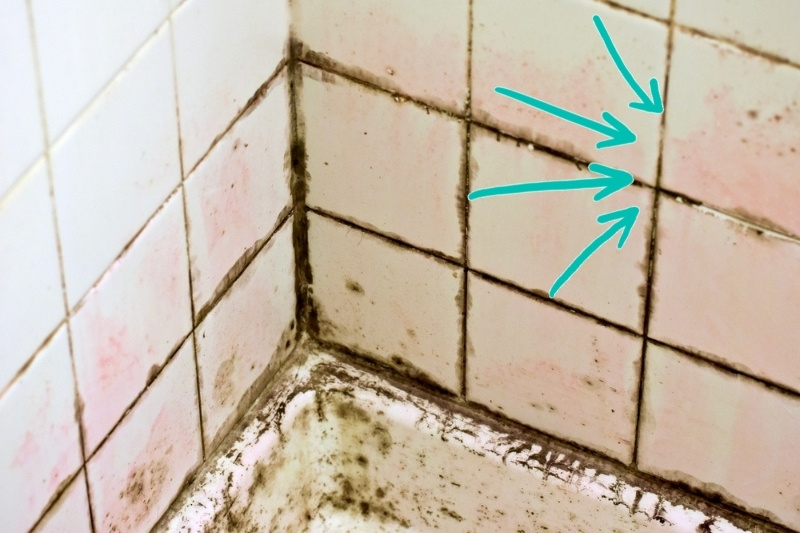
Is Pink Mould in the Shower Dangerous?
You’ll be pleased to hear that the “pink mould” in your shower isn’t typically dangerous. If you get some on your skin, it isn’t going to cause any real issues for healthy individuals.
However, the bacteria can cause problems if they accidentally enter the body. When showering, the most likely way this happens is the bacteria entering via an open wound.
Some of the main concerns of pink mould include urinary tract infections and intestinal issues.
In severe cases (and generally for people with compromised immunity), exposure to pink mould can also lead to pneumonia.
The pinker your shower gets, the greater your risk of developing these complications.
How Can You Get Rid of Pink Mould in the Shower?
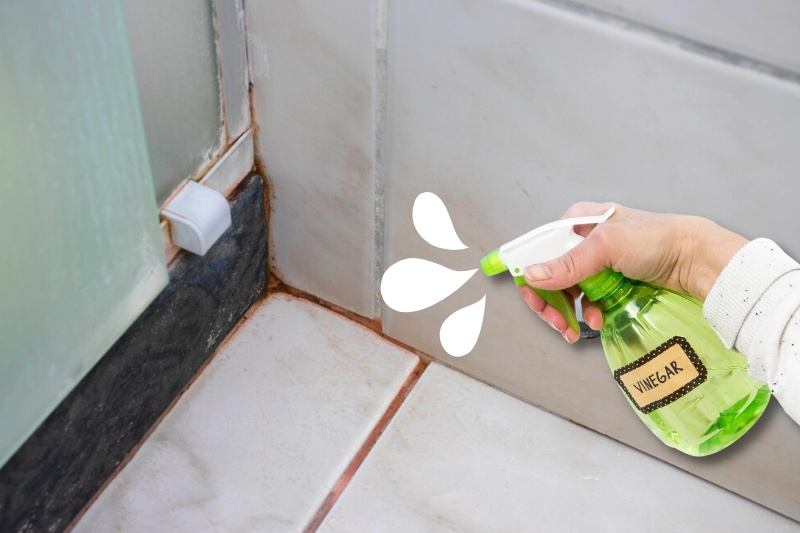
To eliminate the potential danger of pink mould (and the unsightly appearance of a slimy pink shower), you must successfully remove all bacteria from the surface.
Thankfully, you easily kill the bacteria using water and white vinegar by following these steps:
- Create a water & vinegar solution: Mix water and white vinegar together in equal parts and put this in a spray bottle.
- Spray your shower: Spray the vinegar solution on the pink parts of your shower. Be sure to get everywhere the bacteria have colonised, including the shower tray, curtain, taps, plug hole, shower head, and anywhere else that has a pink tinge.
- Wait for 10 minutes: Let the vinegar solution sit for at least 10 minutes. Whatever you do, don’t rush this step! The Serratia marcescens bacteria aren’t killed instantly, and this time is required for the acidity of the vinegar to get to work.
- Scrub and rinse: Take a soft-bristled brush and scrub the areas that have turned pink in circular motions. Rinse with warm water afterwards and dry thoroughly using a clean cloth.
How to Prevent Pink Mould in the Shower
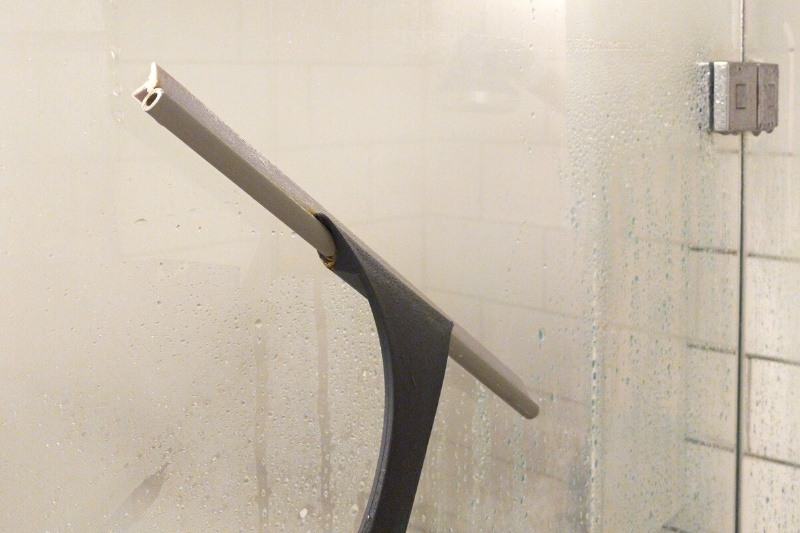
Cleaning all the pink mould from your shower is a good start. However, unless you want to frequently have to deep clean your shower, it’s worthwhile implementing some preventative methods.
These make your shower less habitable for the Serratia marcescens bacteria, so they’re less likely to colonise your bathroom.
Below are some methods you can use to prevent pink mould in the shower:
- Improve ventilation – Improve the ventilation of your bathroom to reduce moisture and humidity. You could consider installing a recirculating fan if you don’t have one already. Alternatively, open the doors and windows after each shower to let the steam escape.
- Rinse the shower after use – Rinse the walls of your shower using the shower head and hot water after showering. This helps to remove soap residue from the walls, so there is less for the bacterium to feed on.
- Use a squeegee – Use a shower squeegee after every shower to remove any soap residue and excess water. This also helps to prevent the growth of mould and removes soap scum before it becomes difficult to clean.
- Keep the shower curtain clean – Wash your shower curtain at least once a month. Shower curtains are the hardest part of your shower to keep dry and easily harbour various bacteria, including Serratia marcescens. Monthly washing kills these bacteria before they multiply and create a biofilm.
- Repair leaks – Always repair shower leaks and dripping taps as quickly as possible. Until the leaks are resolved, these parts of your shower are constantly moist and therefore perfect for bacteria to grow and thrive.

Hannah has a passion for cleaning. She worked her way around Australia by cleaning hostels in exchange for free accommodation and used her cleaning skills to bag a job as a chalet host for a luxury ski company in France.



